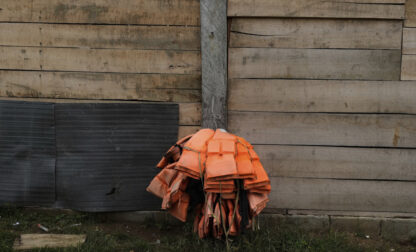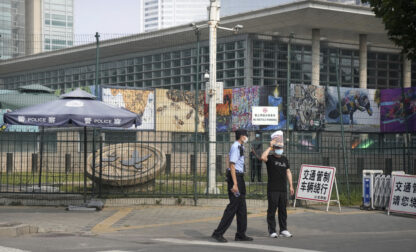Likely Republican presidential nominee Donald Trump has repeatedly said in recent weeks that Chinese migrants may be coming to the U.S. to form an “army,” but the migrants themselves told another story to an AP reporting team.
In Donald Trump’s telling, the migrants coming to the U.S. from China are men of “military” or “fighting” age who may be coming here to form a sort of “army,” suggesting their intent is to attack the country. It’s important to pay attention to Trump’s rhetoric in part because so many of his followers believe what he says: Trump’s false claims about the 2020 election led to the violent attack on the U.S. Capitol, and targeting Asians could have potentially dangerous consequences given the widespread attacks against Asian Americans since the Covid-19 pandemic.
A team of AP reporters sought to check these claims by speaking to some of the migrants themselves and put their journeys into context. Fu Ting of the global investigations team and Washington-based video journalist Serkan Gurbuz headed to a community on Long Island that is home to many Chinese immigrants. They told a far different story than the one painted by Trump.
It’s true that thousands of Chinese migrants had come to the U.S. over the past year, and most were young men. But far from coming here to attack the country, they said they had fled religious or political persecution and hopeless economic circumstances to build a better life in a country where they could enjoy a range of freedoms denied them in their homeland. It was preposterous, they said, to think that people would endure the dangerous and exhausting journey from China to Latin America to the U.S. border only to form some type of fighting force that would launch an attack against the country they hoped to call home. Typical of the migrants was Chen Wang, a 36-year-old who fled China after criticizing the ruling party on social media and being approached by the police: “I feared I could be locked up, so I came to America.”
Reporters Ali Swenson of the democracy team and Didi Tang of the national security team, who, like Fu Ting, is fluent in Mandarin, provided significant reporting for the story. In addition to the video, Gurbuz also shot the photos. Washington-based graphic artist Kevin Vineys built an embedded graphic showing the trends in Chinese migration provided by Tang. For comprehensive, thoughtful reporting that challenged previously unchecked claims by a presidential candidate, Ting, Swenson, Tang and Gurbuz take Best of AP — Second Winner
Visit AP.org to request a trial subscription to AP’s video, photo and text services.
For breaking news, visit apnews.com.




